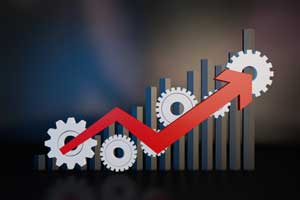 Real gross domestic product (GDP) is still well below its prerecession trend. And that gap may widen over the next decade, according to a recent Economic Synopses essay.
Real gross domestic product (GDP) is still well below its prerecession trend. And that gap may widen over the next decade, according to a recent Economic Synopses essay.
Senior Economist Fernando Martin updated a November 2014 essay in which he found that real GDP would grow at a 2.3 percent annual averageuntil 2022, declining slightly toward a 2.0 percent annual average by the next decade. Between 1955 and 2007, the average annual growth rate was 3.3 percent.
In the most recent essay, Martin noted that real GDP was 19 percent below trend as of the fourth quarter of 2015. To calculate how the gap would change through the end of 2024, he used GDP per labor force participant, rather than GDP per capita. He explained: “Doing so accounts for the effects of changing demographics and labor force attachment.”
Like GDP and GDP per capita, GDP per labor force participant contracted significantly during the Great Recession. Unlike the other two measures, it has grown at an average annual rate higher than its prerecession trend: 1.8 percent since 2010 versus 1.5 percent for the period 1955-2007. Martin noted: “The decline in labor force participation rates explains the difference in performance between GDP and GDP per capita on the one hand and GDP per labor force participant on the other.”
Martin used the more recent trend in GDP per labor force participant along with Bureau of Labor Statistics projections for labor force participation to project GDP growth. He found that the average annual growth rate of GDP for the next decade is 2.2 percent. He also noted that the current projections predict a widening of the gap between real GDP and its prerecession trend from 19 percent in the fourth quarter of 2015 to 26 percent in the fourth quarter of 2024.
Additional Resources
- Economic Synopses: Revisiting GDP Growth Projections
- On the Economy: Projecting GDP Growth Using Labor Force Participation Trends
- On the Economy: Better Measure of Output: GDP or GDI?

